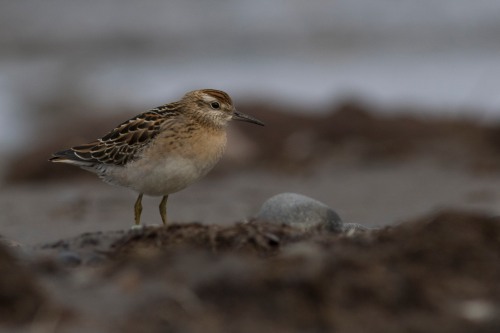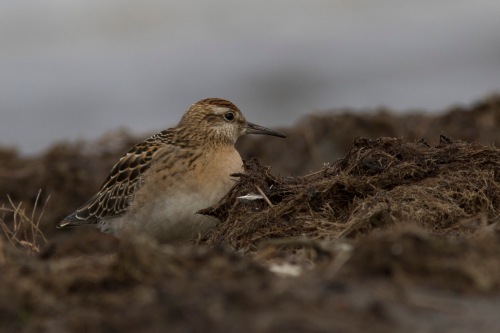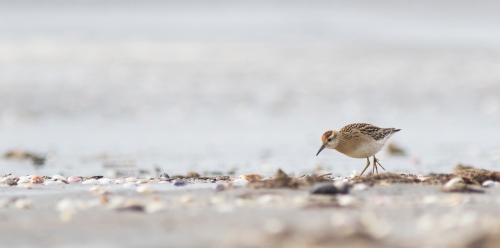Sharp-tailed Sandpiper (Calidris acuminata) on the Alaska Peninsula
by Bryce W. Robinson

The Sharp-tailed Sandpiper (Calidris acuminata) breeds in eastern Siberia and winters in the south Pacific, but a large portion of the juvenile cohort pass through western Alaska on their first fall migration. While I was on the Alaska Peninsula waiting for Bar-tailed Godwits (Limosa lapponica) in September, I got to see a few late moving juvenile Sharp-tailed Sandpipers mixed in with massive Dunlin (Calidris alpina) flocks.

At high tide each day our group would hide in the elymus grass and watch shorebirds come into the high rack line to roost. On one occasion, I noticed the opportunity to photograph a juvenile sharpie, so crept on my belly towards the roosted flock. Once I was close enough to take quality photos, I raised my camera. At the same time the flock took to the air and my chance seemed ruined. I thought it odd though, because the roosting Dunlin are usually tolerant if you are careful and move slowly. I looked around and saw a Bald Eagle passing overhead, which was certainly the reason for the panic. I cursed a bit and looked around to see when the flock might return to roost. As I scanned around, I noticed a lone bird still roosted in the rack line. It was the sharpie, which hadn’t pushed to the air with the Dunlin flock. It’s an interesting note, and something I’ve observed with the few Rock Sandpipers that were associating with the Dunlin flocks as well. On few occasions, the other species opted to stay put despite the flock erupting into flight.

I’d love the opportunity to get to know Sharp-tailed Sandpipers better. Like other birds of the region, the juveniles represent one of the excellent species along the migratory route of the west coast of Alaska that make the place so unique and alluring.


